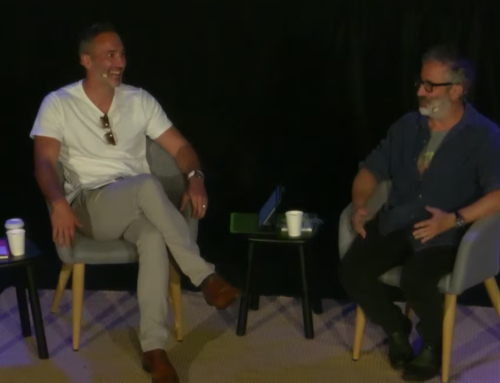Celebrated Australian playwright Timothy Daly is the writer behind our fascinating upcoming theatre production, The Man in the Attic. Daly has graciously shared with us how he came to write this award-winning tale.
Every ten years or so, a writer gets lucky. He comes across a story that makes him glad he’s a writer. In my case, the play about to be performed this coming July in Sydney is truly one of those once-in-a-decade lucky breaks.
I first came across the story of The Man in the Attic over a decade ago, in a book of German radio plays, which made the briefest of references to a newspaper clipping of the trial of a couple who were accused of keeping a Jewish man ignorant of the fact that World War II had ended.
My immediate response was astonishment that such an amazing incident could have happened at all. My other response was amazement that the incident had never been theatrically dramatised.
But I was soon to learn that, in a war, many things happen, but only some of them are recorded. I also learned during the course of researching the period, that over 11,000 Jews were hidden in attics, false floors, cellars and basements in one city alone (Warsaw.)
Being less experienced a playwright than I am now, I was initially unsure how to dramatise it. My first sketches were focussed on creating a document-drama, but for this to succeed I needed access to the records of the actual court case. (The un-named couple were apparently taken to court over the deception.) All attempts to locate the transcript failed, not least because it took place in a rural area whose court appeared no longer to exist.
I next contacted the Simon Wiesenthal Institute in Los Angeles, hoping they might provide me with some information. Sadly, they couldn’t.
One morning I woke up and made a decision: the story would be a homage to every Jew, every man, woman and child who was hidden, persecuted and trapped during that extraordinary and tragic period. But for such a homage to have any power, it had to be as painstakingly researched as if I were creating a documentary record of the actual case.
Accordingly, I explored the fascinating and unknown areas of what Germany was like in the closing months of World War II, as well as how it was painfully (and very slowly) reconstructed from its own self-inflicted ruins. I also got to know how the black market worked in Germany immediately after the war (a market which operated despite the best efforts of the Americans to police it) and how close in spirit and detail that black market was to the illegal drug markets that permeate the contemporary world. In short, I created as near a facsimile to the sort of world that the Jewish man hidden in the cramped attic would have known and experienced.
My research efforts appear to have paid off, for in the numerous international productions of the play so far, a constant response of the various audiences has been that they were not watching ‘a play’, but rather the unfolding of a real historical incident—which it is, but in the absence of the full historical record, some of the play had to be re-imagined and even re-invented. As a simple example, to this day, I do not know the name of the Unknown Jew who is the hero of my play. But, in a strange way, it did not matter. For I was determined that this Jew would stand for them all: those who escaped. Those who did not. Those who resisted and those who could not.
In this way, my once-in-a-decade discovery of an amazing story will lead, I hope, to greater knowledge of the everyday heroism of so many ‘ordinary’ people caught up in a tyrant’s vicious war; and, with luck, the Unknown Jew who is the hero of my play will one day be much less unknown.

We hope that you enjoyed this insight into the play. You can book tickets here.










Leave A Comment